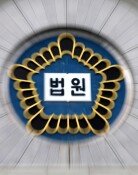Dong-Ah Construction¡¯s fall necessary
Dong-Ah Construction¡¯s fall necessary
Posted October. 31, 2000 15:05,
With the refusal by the creditors on Monday to grant fresh loans, Dong-Ah Construction's insolvency seems imminent, harking the fall of one of the construction industry¡¯s big three.
Although the current workout program remains in effect, as Dong-Ah is unable to meet on its obligations for accounts payable, the financial industry seems to have determined the imminence of Dong-Ah's insolvency.
The creditors¡¯ decision might have come about through the collusion among them to stop trying to fill a bottomless pit, and the market forces that require the fall of one of the big three.
Honest attempt made
For some time, the market facing the second phase business restructuring called for the closure of large non-viable companies, namely, Hyundai Engineering and Construction, Dong-Ah Construction and Ssangyong Cement Industrial Co. Although about 200 companies have been blacklisted for insolvency, many have felt that removal of the little guys with little effect on the market might not bring about successful reform.
Previously, as Cho Hung Bank proposed to revive Ssangyong even as the government and Korea Exchange Bank sent various messages in support of Hyundai, the foreign investors have gone on a selling binge expressing their disappointment.
An analyst at a foreign securities firm stating that many foreign investors who scorn last-hour resuscitation attempts have suggested they would leave the Korean market if one of the big three is not closed down, welcomed the decision.
On the other hand, with Dong-Ah Construction becoming the sacrificial lamb, HEC and Ssangyong stand to breathe a sigh of relief.
Will construction companies fall in wave?
With the possible interruption of the workout program of Dong-Ah Construction, following earlier ones for Woobang Inc. and Miju Industry, the very effectiveness of workout programs for construction companies has become questionable.
The creditors have been stressing the fundamentally limited nature of the benefits offered for the construction companies through the workout programs. Normally, the construction companies plan construction projects and obtain down-payments by would-be purchasers for cash to fund the project. However, as soon as the company is known to have entered into a workout program, the trust necessary for such interchange is shattered.
It is not like manufacturing companies, which could develop new or better products to increase profit. The construction industry faces even greater obstacles as the construction market has been lagging. Many in the banking industry have voiced that Woobang Inc., Miju Industry, and Dong-Ah Construction have survived for so long due to regional sentiment for Woobang Inc., the fact that Rep. Park Sang-Hee was the major shareholder for Miju Industry, and the fear of possible negative image internationally for Dong-Ah Construction.
Creditors' ledgers heavy
As of August, the ledgers of various creditors holding a total 3.77 trillion won against Dong-Ah Construction are quite different.
Among the various creditors, Seoul Bank, which holds 16% of the debt totaling 547.7 billion won though loans and credit guarantee, has appropriated and has on reserve 47% of the expected loss. The loss due to the appropriation of reserve for the non-performing loans to Dong-Ah Construction has been included in the 1.3 trillion won pubic fund injection requested by Seoul Bank from the government. As such, for Seoul Bank, the interruption of the workout program with Dong-Ah Construction will not necessarily lead to much immediate loss.
On the other hand, for Foreign Exchange Bank, which holds 439 billion won debt over Dong-Ah but with reserve against loss at 20%, the insolvency of the Dong-Ah Construction might lead to a heavy loss. The resolve of the Foreign Exchange Bank to stand its ground without seeking public fund injection might also be jeopardized.



![[사설]“용인에 産團 있어야 할지”… 국가대계 흔드는 경망한 김성환](https://dimg.donga.com/c/138/175/90/1/wps/NEWS/IMAGE/2025/12/28/133051638.1.jpg)



